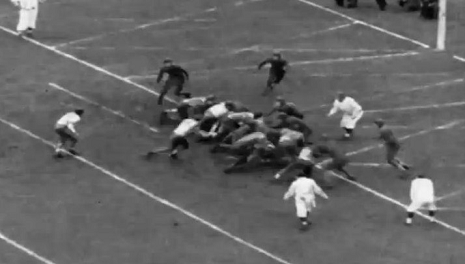2) Louisiana State 9-1-1
3) Pittsburgh 8-1-1
4) Alabama 8-0-1
5) Washington 7-2-1
6) Santa Clara 8-1
7) Northwestern 7-1
8) Notre Dame 6-2-1
9) Nebraska 7-2
10) Pennsylvania 7-1
11) Duke 9-1
12) Yale 7-1
13) Dartmouth 7-1-1
14) Duquesne 8-2
15) Fordham 5-1-2
16) Texas Christian 9-2-2
17) Tennessee 6-2-2
18) Arkansas 7-3
Navy 6-3
20) Marquette 7-2
One of the most hotly debated arguments over who should be #1 took place following the 1936 season, which was also the debut season for the official AP poll. So controversy was there from the very beginning. 7-1 Minnesota ended up #1 despite not even winning their own conference, which wouldn't happen again until Alabama repeated the feat 75 years later.
7-1 Northwestern beat Minnesota 6-0 and thereby won the Big 10 outright, but they fell to #7 in the final AP poll after #8 Notre Dame crushed them 26-6 in their finale. #2 LSU had a better record than Minnesota at 9-0-1, but then they were upset 21-14 by #6 Santa Clara in the Sugar Bowl, validating the AP poll's choice of Minnesota over them.
The controversy involved #3 Pittsburgh, who whipped #5 Washington 21-0 in the Rose Bowl, significant because Minnesota only beat Washington 14-7. That came on top of Pitt beating #9 Nebraska 19-6 (Minnesota beat them 7-0) and #8 Notre Dame 26-0 (Again, Dame beat Northwestern 26-6, who beat Minnesota 6-0).

Northwestern scoring the touchdown that beat Minnesota 6-0. That gave Northwestern the Big 10 championship, but Minnesota finished #1 in the AP poll. So Alabama's #1 finish over SEC champion LSU in the final 2011 season's AP poll was not unprecedented.
